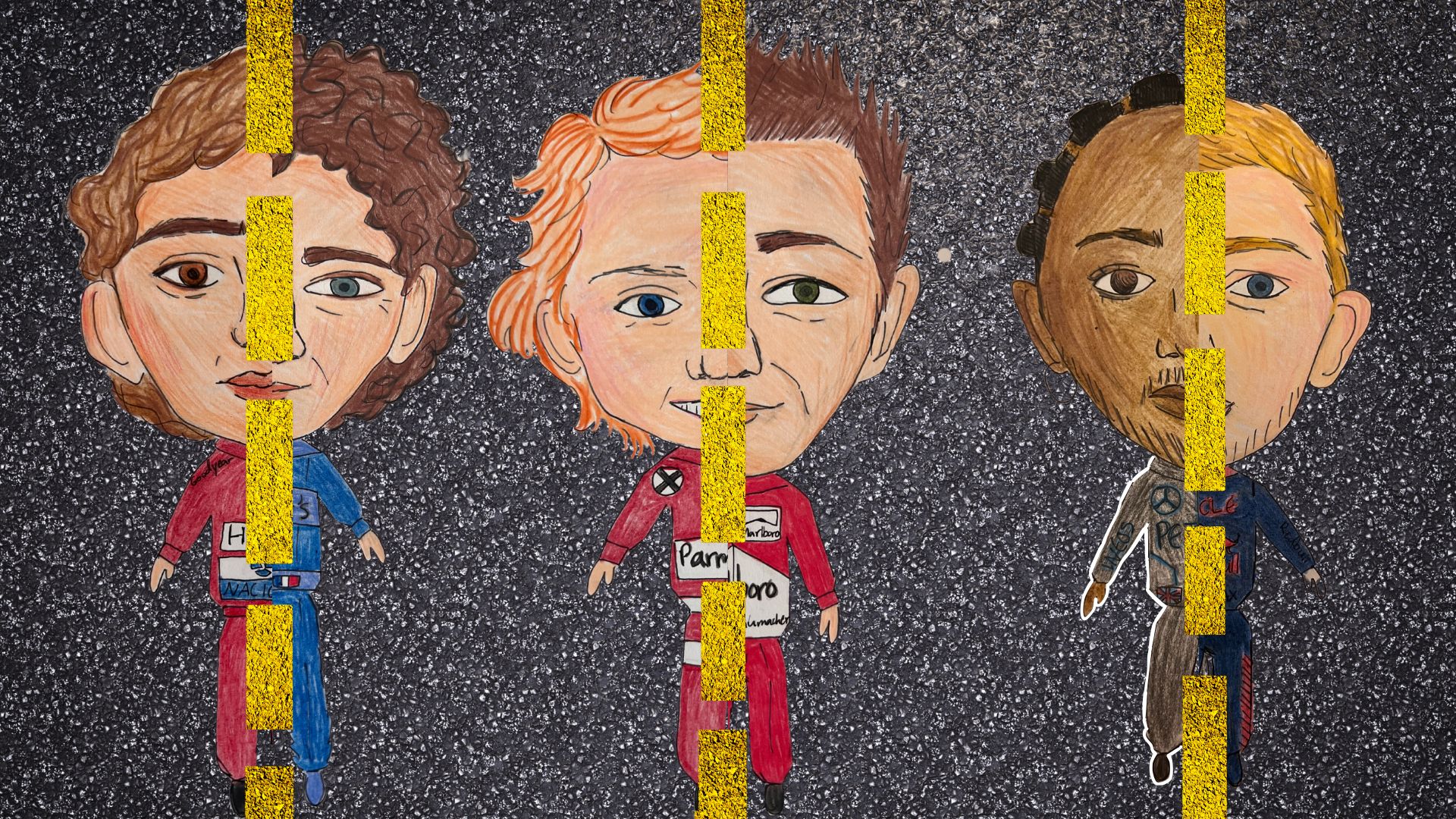
The icons of Formula 1
Background
Juan Manuel Fangio came from humble beginnings in Argentina, growing up with hard-working immigrant parents and five siblings. Fangio started working as a mechanic at 11 years old and stuck with it for nearly four decades. During that time, Fangio also raced self-prepared cars across long distances in South America. He began racing in Formula 1 at 38 years old. This made him one of the oldest drivers to compete in the sport when he won his last title at 46.
Career
Competing in seven full seasons, Fangio won the World Drivers’ Championship five times with four different teams and was runner-up twice. During his career, he competed in a total of 51 Grand Prix. He started races on the front row 48 times (29 of those being on pole), set 23 fastest laps, finished on the podium 35 times and won 24 Grands Prix.
Nickname
Fangio was nicknamed “El Maestro” (the master) by his teammate, Stirling Moss. The name stands as a reflection of Fangio’s ability to adapt and excel in different cars.
Background
Nicholas “Niki” Andreas Lauda was born in 1949, into a banking dynasty in Vienna, Austria. His racing career started in 1968 and consisted of many crashes. Nonetheless, Lauda progressed through Formula Vee and Formula 3 then bought his way into Formula 1 and Formula 2. By 1974, Lauda was employed by Enzo Ferrari.
Career
The same year that Lauda joined Ferrari, he seized victories in Spain and Holland. In 1975, he won the Monaco, Belgium, Sweden, France and USA Grands Prix. These victories led him to claim his first World Championship title.
Disaster struck for Lauda in 1976 at the infamous German Grand Prix. During his second lap at the dangerous Nurburgring track, Lauda suffered a deadly crash. Despite suffering severe burns on his head and wrists, breaking several bones and losing half an ear, Lauda returned to the racetrack six weeks later and finished fourth in the Italian Grand Prix.
After pulling out of the 1976 championship due to a dangerously wet Japanese Grand Prix, Lauda won his last title with Ferrari in 1977. In 1978, Lauda joined Brabham, winning two races and ultimately finishing fourth in the championship. The following year, Lauda walked away from Formula 1.
In 1982, Lauda returned to Formula 1 as a McLaren driver. Two years later, he won his third championship in a close battle with teammate Alain Prost. In 1985, he won his last Grand Prix before retiring for good.
Nickname
The media gave Lauda the nickname “The Computer” for his cool, calculated approach to racing.
Background
Born in 1955, Alain Marie Pascal Prost began karting at 14, a much later start than other F1 drivers, while on a family vacation. He bought his first kart at 16 by saving up the money he made working at his dad’s furniture store. By 1974, he was a full-time racer, rapidly progressing through the karting ranks. In 1979, Prost won both the European and French Formula 3 titles, attracting interest from F1 teams.
Career
Prost began his F1 career in 1980 with McLaren, scoring points during his first race. Prost won four F1 world championships, becoming the first French champion.
His first came in 1985 when he finally beat teammate Niki Lauda. He won his second in 1986, finishing above his new teammate, 1982 champion Keke Rosberg.
Prost is most known for his intense rivalry with Ayrton Senna. The two won seven of nine championships from 1985-1993. Their most intense period of rivalry was the two-year stretch they were teammates at McLaren. Their intense rivalry on the track bled outside of racing, completely disintegrating their relationship, with the two often accusing the other of dishonorable racing.
Despite this tension, however, the two were quite the prolific duo for McLaren and won 25 out of 32 races they completed together.
Nickname
Prost was nicknamed “Le Professeur” because of his strategic and analytical driving style. According to The New York Times, his mantra was to “Win as slowly as possible.” Rather than being a firecracker like many of his teammates, such as Ayrton Senna, Alain’s driving style is efficient and less eye-catching.
Background
Ayrton Senna da Silva was born into a wealthy Brazilian family and spent his childhood exploring different athletic activities. He settled on racing at the age of four. Senna’s first kart was developed by his father’s company. He used it to win the South American karting championship in 1977.
Senna moved to England in 1981 to pursue a career in open-wheel racing and eventually earned an F1 seat with Toleman in 1984.
Career
Ayrton’s first stand-out performance came during his rookie season at the Monaco Grand Prix. Senna fought his way to the front of the race after qualifying 13th on the grid, not letting the heavy rain get in his way. Before he could pass the race leader, Alain Prost, the race was stopped early due to the dangerous weather conditions.
Even so, Monaco 1984 was one of three of his podium finishes during his debut season and led him to sign with Lotus for his second year. Senna won his first F1 race at the 1985 Portuguese Grand Prix, also amidst wet conditions. In 1988, after four years of steadily making his way to the peak of motorsport, Senna won his first World Championship.
He spent 1989 fighting with teammate Alain Prost for the championship, resulting in one famous crash and a second-place trophy. In 1990 and 1991, however, he won his second and third world championships with McLaren, becoming the youngest-ever three-time world champion at the time.
Nickname
Even among superstars like Michael Schumacher and Lewis Hamilton, Ayrton Senna is remembered by Formula 1 as the fastest driver there ever was. Fans nicknamed Ayrton “Magic Senna” because of the “magical” feats he performed on track.
Background
Michael Karl Schumacher was born to a working-class family in Hurth, Germany in 1969. At just four years old, he drove a kart made of leftover parts. When he entered kart races, he became unstoppable. He won the German junior karting championship in 1984 and 1985 and went on to capture the German and European karting titles in 1987. The following year, at 19, he became a Formula 3 driver. Two years after that, he won the German F3 championship.
Career
Schumacher debuted in Formula 1 in 1991 with Jordan-Ford and then transferred to Benetton the same year. He won his first and second drivers’ championships with Benetton, in what was called the worst F1 car to win a championship by the racing magazine Autosport.
Schumacher raced for four teams during his almost 20 years in the sport, joining a struggling Ferrari in 1996. He was the fuel Ferrari needed to enter their golden age. Ferrari went on to win five back-to-back championships with Schumacher from 2000-2004, permanently securing Ferrari and Schumacher’s place as F1 legends.
At the end of the 2006 season, Schumacher retired with 91 wins, 155 podiums and seven world drivers’ championships to his name. However, he returned to the sport in 2010 with Mercedes. Despite spending three seasons with the team, Schumacher never won a race or finished higher than eighth in the drivers’ championship. In 2012, he retired for good.
Nickname
“The Red Baron” is one of Schumacher’s many nicknames, borrowed from the WW1 German fighter pilot of a red plane, Manfred von Richthofen, with 80 confirmed kills. Schumacher was nicknamed “The Red Baron” similarly, because of his killer-like tendencies in his red Ferrari.
Background
Fernando Alonso Diaz was born in 1981 in the Asturias region of northern Spain. At just three years old, Alonso began his journey to F1. He started in a pedal kart that resembled an F1 car before entering his first proper kart race (and winning) at seven years old. Despite being the youngest competitor in nearly every category, Alonso kept a winning streak and won a world championship by his mid-teens. This success landed him sponsored drives that were crucial to continuing his racing career. In 2001, Alonso made his F1 debut with Minardi.
Career
In 2002, Alonso signed with Renault as a test driver. The following year, in Malaysia, he became the youngest-ever pole position winner in his second race for the team. Alonso would also go on to become the youngest Grand Prix winner at 22 years old, in Hungary. The 2005 season saw Alonso’s best performance yet, scoring points in 17 out of 19 races, finishing in the top three 14 times and winning seven races. Despite being up against the likes of Michael Schumacher and Kimi Raikkonen, Alonso’s adaptability made him the favorite for the World Drivers’ Championship in 2005 and 2006.
In 2010, Alonso joined Ferrari after poor performances with McLaren and Renault. In 2012, Alonso put on an epic performance, reminiscent of his glory days with Renault. The Spaniard was just three points shy of winning his third drivers’ championship by the end of the season.
2013 was Alonso’s last successful season with Ferrari. In 2015, he returned to McLaren, where he raced for three seasons with little success. This prompted a two-year hiatus from F1 for Alonso. During this hiatus, he won the 2018-2019 World Endurance Championship and the 24 Hours of Le Mans, twice. Alonso then returned to the sport in 2021 with Alpine, formerly known as Renault. Then in 2023, he signed with Aston Martin. There, Alonso delivered eight podiums, scored 206 of the team’s 280 points and finished fourth in the drivers’ standings.
Nickname
Alonso’s nickname is simply an abbreviation of his first name.
Background
Kimi Matias Raikkonen was born in 1979 and grew up in Espoo, a suburb in the Finnish capital, Helsinki. Money was scarce for the Raikkonen family, yet Kimi and his brother Rami kicked off their racing careers early on. When Kimi was three years old, the two started on miniature motocross bikes modded with training wheels. At age 10, Kimi moved to go-karts and Rami worked long nights to fund his motorsport journey. When he was 16, Kimi left school in pursuit of a mechanics course, believing that was the only he could stay involved with motorsport. However, his natural driving talent was enough to earn him sponsored drives.
Career
After success in European karting, Raikkonen competed in and won two British-based Formula Renault championships. Then in 2001, he made his F1 debut with Sauber. Raikkonen quickly showed pace and caught the attention of his competitors, namely McLaren. In 2002, he joined the team in place of two-time World Drivers’ Championship winner Mika Hakkinen. In the five seasons he spent with McLaren, Raikkonen frequently navigated mechanical challenges. Despite this, he finished second in the drivers’ championship in 2003 and 2005, won nine races and finished in the top three 36 times.
In 2007, Raikkonen made the move to Ferrari, replacing seven-time World Drivers’ Championship winner Michael Schumacher. At the season-opener, Raikkonen put on a stunning performance, winning the race from pole position. In a tight championship battle with Fernando Alonso and Lewis Hamilton, Raikkonen won the final race of the season which allowed him to lead the drivers’ championship by one point. 2009 marked Raikkonen’s last season with Ferrari and last year competing in F1 until 2012 when he signed with Lotus.
Raikkonen proved his comeback by finishing third overall in the drivers’ championship and leading Lotus to fourth place in the constructors’ championship. That year, he was also the only driver to finish all 20 races. After two seasons with Lotus, Raikkonen made the move back to Ferrari for the 2014 season. The next few seasons proved to be uncompetitive for the Finn. However, in 2018, Raikkonen finished third in the drivers’ championship with 12 podiums and a 21st career win at the U.S. Grand Prix under his belt.
In 2019, Raikkonen signed a two-year contract with Alfa Romeo Racing (formerly Sauber). At 40 years old, Raikkonen outshone his 25-year-old teammate Antonio Giovinazzi, scoring 43 of the team’s 57 points. At 42 years old, Raikkonen retired with 21 Grand Prix victories, 103 podiums, 18 poles, 46 fastest laps and a world championship to his name.
Nickname
Raikkonen was nicknamed “The Iceman” for his ice-cold demeanor—speaking sparingly with a monotone voice in interviews, rarely smiling and staying cool under pressure during races.
Background
Lewis Carl Davidson Hamilton was born in Stevenage, England in 1985. With the support of his dad, Hamilton began karting at eight years old. He went on to win the British Kart Championship when he was 10. At 13, he was signed to the McLaren and Mercedes-Benz Young Driver Support Programme to further develop his racing skills. During this time, Hamilton won several European and world karting championships and became the youngest driver to be ranked number one in the sport when he was 15. In 2003, he seized the British Formula Renault championship, winning 10 of the 15 races he competed in. In 2004, he competed in the Formula 3 Euroseries championship and proceeded to win the championship in 2005 and 2006. In 2006, Hamilton competed in GP2 and won its championship.
Career
Hamilton made his F1 debut with McLaren in 2007. That same year, he finished second in the World Drivers’ Championship, just one point behind Kimi Raikkonen. He also won four races that year, meeting the record for most wins in a rookie season. In 2008, Hamilton won five races and secured the drivers’ championship at just 23 years old. This made him the youngest winner until Sebastian Vettel won his first title in 2010.
Hamilton maintained a consistent performance the next few seasons, winning two races in 2009, three in 2010 and 2011 and four in 2012. In 2013, he made the move to Mercedes. Despite winning only one race that season, he maintained a top-five finish in the drivers’ championship for the seventh consecutive year.
The 2014 season was dominated by Hamilton. He won 11 races and clinched his second drivers’ championship. He proved to be just as dominant in 2015, winning his third title one month before the season’s end. This performance proved instrumental in helping Mercedes win the constructors’ championship.
Hamilton went on to win the drivers’ championship in 2017, 2018 and 2019. In 2020, he tied with Michael Schumacher in the number of titles won (7) and broke his record for most race victories (91). Hamilton looked to be on track for an eighth title in 2021, however in a battle with Max Verstappen in Abu Dhabi, a controversial decision made by racing stewards put him at a disadvantage and enabled Verstappen to win the championship.
The next three seasons with Mercedes proved difficult for Hamilton. In 2024, he won the British Grand Prix, which marked his first race win since 2021. Earlier that same year, Hamilton announced that he would be racing for Ferrari in 2025.
Nickname
Hamilton was nicknamed “Billion Dollar Man” by British media as he was thought to be the first sports star to make a billion-dollar fortune.
Background
Sebastian Vettel was born in 1987 in a small town in Germany. He made his karting debut at seven years old and immediately proved his talent. Vettel’s success brought him generous sponsors, one being Red Bull Racing. With their support, he won several karting titles before switching to open-wheel racing in 2003. In his first season in the junior Formula BMW series, Vettel finished second in the overall standings. The following season, he won the series championship with 18 victories out of 20 races. After this, Vettel competed in the Formula 3 Euro Series and the World Series by Renault.
Career
Vettel made his F1 debut in 2007 with BMW Sauber after serving as a test driver for two seasons. He had a mediocre rookie season, not finishing any higher than fourth across 21 races. However, in 2008, he joined Toro Rosso and had his maiden win at the Italian Grand Prix. It was a well-earned victory for Vettel, being in an inferior car and racing under wet conditions. Red Bull took note of this and signed him as a driver for the 2009 season.
In his first year with the team, Vettel won four races and finished second in the drivers’ championship. In 2010, he won five races and clinched the drivers’ championship, making him the youngest winner at 23 years old. Vettel went on to dominate the 2011 season and win his second drivers’ championship two months before the end of the season. The following year, he won his third drivers’ championship.
In 2013, Vettel won 10 of the first 16 races and seized his fourth drivers’ championship with a month left in the season. By the end of the season, he became the first driver in F1 history to win nine consecutive races. The following season, Vettel finished fifth in the drivers’ championship and announced his migration to Ferrari in 2015.
Vettel wasn’t as competitive with Ferrari in 2015 and 2016, finishing third and fourth in the drivers’ championship, respectively. In 2017, he won three of the first six races and finished the drivers’ championship in second, behind Lewis Hamilton. His performance was similar in 2018, winning five races and finishing behind Hamilton in the standings.
The next two seasons were a struggle for Vettel, winning one race in 2019 and none in 2020. In 2021 he signed with Aston Martin and faced an even more lackluster performance. In the middle of the 2022 season, Vettel announced his retirement from F1 at the end of the season.
Nickname
Vettel was nicknamed “Baby Schumi” in his early racing years due to his German nationality and driving style adjacent to that of Michael Schumacher.
Background
Nico Erik Rosberg was born in 1985 to a wealthy family in Wiesbaden, Germany, and grew up in Monaco. Early on, Nico wanted to follow in the footsteps of his father, Keke Rosberg, and become a Formula 1 World Champion. Nico jumped in a kart for the first time at six years old and began championship kart racing at age 10. He quickly moved up the rankings and competed in the Formula A karting championship alongside Lewis Hamilton in 2000. In 2002, Nico moved up to single-seaters and won the Formula BMW ADAC series championship. This caught the attention of Williams, who offered him an F1 test drive. Nico then raced in the F3 Euroseries on his father’s Team Rosberg, where he had four victories across two seasons. In 2005, he entered a new racing category, GP2, and became its first champion.
Career
Rosberg signed to race in the 2006 F1 season with Williams after earning the highest-ever score on their engineering aptitude test. In his debut in Bahrain, he set the fastest lap and finished seventh. Four seasons later, in 2010, Rosberg joined Mercedes. Across three seasons, Rosberg out-qualified and outscored his teammate, Michael Schumacher. In 2012, he had his maiden Grand Prix win in China, from pole.
Rosberg was reunited with Hamilton at Mercedes in 2013. Rosberg won two Grand Prix that season—Monaco and Silverstone—despite being outscored by his teammate. In 2014, Rosberg won five races and scored regularly enough to be in contention for the drivers’ championship battle against Hamilton. However, his car lost power during the last race of the season, allowing Hamilton to claim his second championship.
In 2015, Rosberg and Hamilton’s once friendly rivalry faltered. When Mercedes gave the pair full autonomy to race each other, a psychological battle for supremacy was unleashed. Once again, Rosberg lost the drivers’ championship to Hamilton.
But in 2016, he returned with a vengeance. Rosberg kicked off the 21-race season with four back-to-back wins, giving him a comfortable lead in the drivers’ championship. However, Hamilton reduced his lead to a mere five points in the final four races. Tensions were at an all-time high at the season finale in Abu Dhabi. In the closing laps of the race, Rosberg saw his dream of winning the drivers’ championship come to fruition. Just five days after making his mark in F1 history, Rosberg announced his retirement from the sport.
Nickname
Williams teammate Mark Webber affectionately nicknamed Roseberg “Britney” for his luscious blonde hair—an ode to Britney Spears.
Background
Max Emilian Verstappen was born into a racing family in Flanders, Belgium in 1997. He was raised by two experienced racers: his father Jos, a Formula 1 racer for nine years, and his mother Sophie, a karting racer. Max was trained from an early age by his father, beginning his karting career at only four years old and competing in his first championship at seven.
Verstappen was a prodigy in the sport since he entered his first race, speeding through the lower ranks and making history as he did so. Verstappen’s historic karting season in 2013 consisted of six championships: three CIK-FIA championships, two European championships and one world championship. Verstappen became the first driver since his father, Jos, to win two European championships in one season.
Career
In 2015, Max made his F1 debut with Toro Rosso at 17, becoming the youngest driver to ever race in F1, a record that will never be broken, now that the minimum age in Formula 1 has been increased to 18. Max proved to be a fierce competitor on track, pulling impressive, ruthless overtakes for his junior team.
He was promoted to a full-time Red Bull driver for his second season and won the first grand prix of that season in his tailor-made car. Verstappen’s brilliance didn’t slow down, however. He continued improving with every race, eventually winning his first championship in 2021 after an intense season-long battle with Lewis Hamilton for the drivers’ championship
Four years later, Verstappen is still just as robotically perfect on the track as he proved he was during his first year. He now holds four World Drivers’ Championships, 65 wins, 116 podiums and 3147.5 points from his 216 races.
Nickname
After his first year in F1, Verstappen won three awards: Rookie of the Year, Action of the Year and Personality of the Year. The last of the three reflects Max’s intense approach to racing, rattling the F1 world since day one. Verstappen earned the nickname “Mad Max” early on in his career for his aggressive, often controversial style on and off the track.
Background
Daniel Joseph Ricciardo was born in 1989 in Perth, Western Australia. He began kart racing when he was nine and quickly moved his way up the grid. In 2006, Ricciardo received a scholarship to race in the junior Formula BMW series and finished third in the Asian championship the same year. In 2007, he moved to Formula Renault 2.0. The following year, he raced in Formula 3. In that category, he won the 2008 Western European Cup and the 2009 British F3 Championship.
Career
Ricciardo made his F1 debut with the Spanish team HRT in 2011. He then moved to Scuderia Toro Rosso—Red Bull’s junior team—and raced there for the 2012 and 2013 seasons. In 2014, Ricciardo signed with Red Bull to take the place of Mark Webber and raced alongside four-time world champion Sebastian Vettel. That same year, Ricciardo had his maiden Grand Prix win in Canada. He had two more victories later in the season, in Hungary and Belgium, leading him to finish third in the drivers’ championship.
In 2016, Ricciardo drove alongside a new teammate, Max Verstappen. That year, Ricciardo won the Malaysian Grand Prix and placed third in the standings again. He continued to be successful with Red Bull, winning in Azerbaijan in 2017 and China and Monaco in 2018.
Ricciardo left Red Bull for Renault in 2019. He finished ninth in the drivers’ championship that year but moved up to fifth in 2020. After limited success with the team, Ricciardo announced his move to McLaren for the 2021 season. In 2021, he won the Italian Grand Prix but only finished eighth in the drivers’ championship. 2022 was a difficult year for the Australian, getting outperformed by his younger teammate, Lando Norris, and finishing 11th in the standings.
At the beginning of the 2023 season, Ricciardo failed to secure a race seat after McLaren signed Oscar Piastri. In the middle of the season, Ricciardo signed with Scuderia AlphaTauri (formerly known as Toro Rosso). However, shortly after, he broke his left hand in a crash during free practice for the Dutch Grand Prix and was out of the cockpit for several months.
Despite this, AlphaTauri extended his contract to the 2024 season. 2024 was even more challenging for Ricciardo, finishing in the top 10 only three times across 18 races. He had a best-place finish of eighth and finished 14th in the drivers’ championship, 10 points behind teammate Yuki Tsunoda. After the Singapore Grand Prix, AlphaTauri, now RB, announced that Liam Lawson would race the final six races in place of Ricciardo.
Nickname
Ricciardo nicknamed himself “The Honey Badger” after feeling ridiculed by his rivals in his first season with Red Bull. Despite having a joyous, bubbly personality off-track, Ricciardo embodied the fierce spirit of the honey badger on track.
-
 OpinionAre reels real?
OpinionAre reels real? -
 OpinionClass divided
OpinionClass divided -
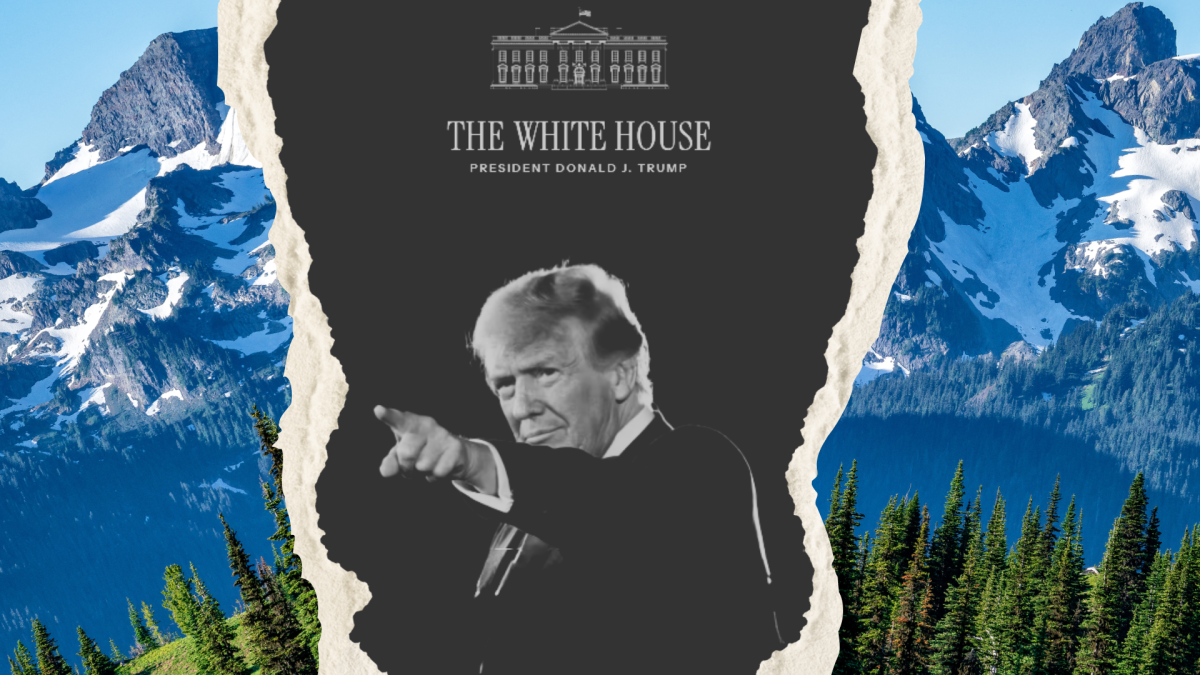 OpinionPublic lands in peril
OpinionPublic lands in peril -
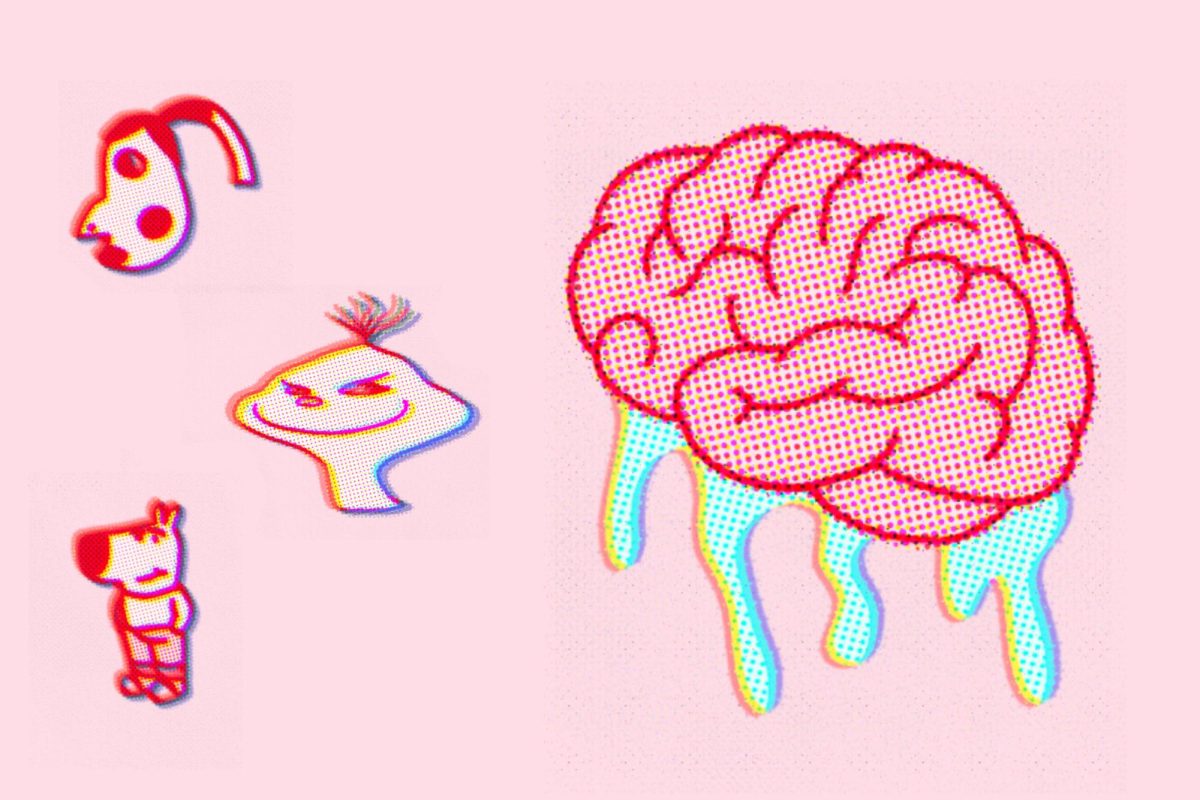 OpinionBrain nourishment
OpinionBrain nourishment -
 OpinionC (these) dramas
OpinionC (these) dramas -
 OpinionEditorial: Food for thought
OpinionEditorial: Food for thought -
 OpinionRenaissance to ruin
OpinionRenaissance to ruin -
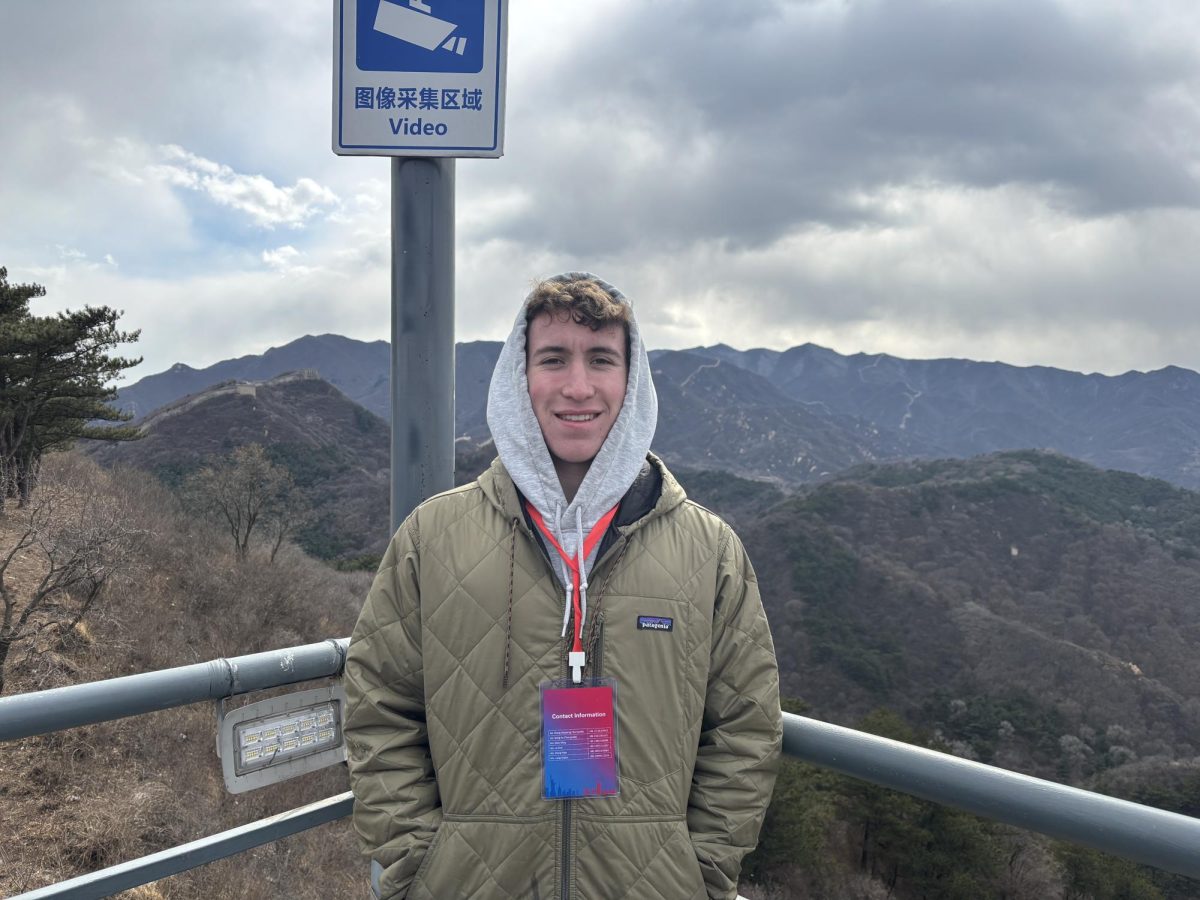 OpinionMy nine days in China
OpinionMy nine days in China -
 OpinionGenerating student preparedness
OpinionGenerating student preparedness -
 OpinionThe death of the hobby
OpinionThe death of the hobby
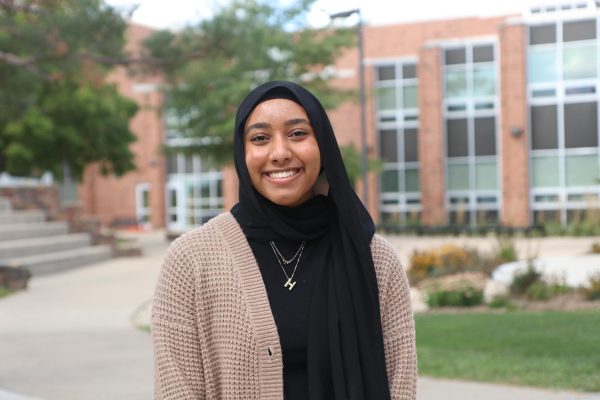

Your donation will support the student journalists of West High School. Your contribution will allow us to purchase Scholarship Yearbooks, newsroom equipment and cover our annual website hosting costs.


